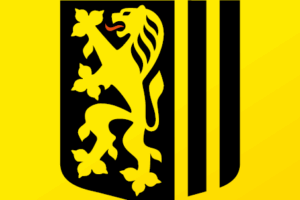
The government is allocating 14.4 billion hryvnias for one-time payments of 1,000 and 6,500 hryvnias under the “Winter Support 2025–2026” program (pictured: Volodymyr Zelenskyy meeting with government officials in October 2025). (Photo: Yuliia Svyrydenko / Facebook)
Over the past five years, Ukraine has spent more than 40
billion hryvnias ($1.03 billion) on one-time payments to its citizens. Now, the
government is promising to revive the so-called “Zelenskyy thousand” program.
But where will the money come from — during wartime?
The government expects between 10 and 14 million people to qualify for the
one-time financial assistance under its new “Winter Support” initiative —
including 1,000 hryvnias ($26) for the general public and 6,500 hryvnias ($168)
for the most vulnerable groups.
The 2026 state budget allocates 14.4 billion
hryvnias ($372 million) for the implementation of the Winter Support program.
Of that, 10 billion hryvnias ($258 million) will go toward the 1,000-hryvnia
payments, and 4.4 billion ($114 million) will be set aside for the
6,500-hryvnia payments to vulnerable populations.
Applications are expected to open from Nov. 15
to Dec. 15, 2025. Prime Minister Yuliia Svyrydenko said the payments are
intended for those struggling with utility bills, calling them “extra funds for
families.”
Another measure, the “Warm Winter” program,
will provide a one-time 6,500-hryvnia ($168) payment to vulnerable categories,
with an estimated 660,000 recipients. Eligible groups include children in
foster care, children with disabilities, persons with Group I disabilities
among internally displaced persons, children from low-income families, and
elderly people living alone.
In addition to cash payouts, the Winter
Support package includes the UZ-3000 program — free rail travel for distances
of up to 3,000 kilometers on low-demand days, when some 200,000–250,000 train
tickets typically go unsold. According to the state railway operator, this
initiative will not require new budget spending because the government already
co-finances Ukrzaliznytsia to offset the gap between actual ticket costs and
prices paid by passengers.
Social Policy Minister Denys Uliutin insisted
the money is already available. “As soon as the decision is passed and approved
by the Cabinet of Ministers, we’ll immediately begin implementation,” he said.
The program will be funded using existing resources in the state budget,
without additional spending. He added that 10 billion hryvnias ($258 million)
have been allocated for the “Winter Thousand,” with about 10 million Ukrainians
expected to receive the payment.
NV
Business looked into whether a country fighting for survival can afford to run
such programs.
From vaccines to war: the story of Zelenskyy’s “thousand”
One-time payments became a feature of Ukrainian life even before Russia’s
full-scale invasion. The “eSupport” program officially launched on Dec. 19,
2021 — vaccinated Ukrainians were eligible to receive 1,000 hryvnias ($26) for
select services through the Diia app. By February 2022, 8 million people had
used the program, and a total of 8 billion hryvnias ($206 million) had been
transferred to digital cards.
Interestingly, the most popular expenses were books (1 billion hryvnias or
$26 million), movie tickets (658 million or $17 million), and other
entertainment services — back when cultural outings still seemed reasonable.
After Russia launched its full-scale invasion of Ukraine on Feb. 24, 2022,
the government introduced a 6,500-hryvnia ($168) one-time payment for citizens
who lost their jobs due to the war. According to official figures, more than
4.7 million Ukrainians had received the funds by September 2023 — totaling 30.9
billion hryvnias ($795 million). In the program’s first four days, 2 million
applications were submitted, as the state tried to support people left without
a means of survival.
New payments were also introduced for veterans. In 2024, to mark
Independence Day, the government approved one-time payments ranging from 450 to
3,100 hryvnias ($12–$80), depending on the recipient’s category — from war
participants to people with Group I disabilities. Nearly half a million people
received those payments.
The “Winter eSupport” program, launched by President Volodymyr Zelenskyy,
began on Dec. 1, 2024. In just the first week, more than 6 million applications
were submitted, reflecting overwhelming demand.
The program’s terms were simple: a one-time payment of 1,000 hryvnias ($26)
was available to all Ukrainians living in government-controlled territory,
including children. Residents of temporarily occupied areas were excluded. The
money could be used for utilities, medicine, books, transportation, or donated
to support Ukraine’s Armed Forces.
The program ran through February 2025. For people not using Diia, payments
were distributed via Ukrposhta, and starting Dec. 10, through partner banks as
well.
Spending statistics were largely predictable. According to the Economy
Ministry, 56% of the funds went toward utility payments. Other common uses
included mobile services, Ukrainian-made medicines and books, transportation,
and other everyday needs.
Between Oct. 25, 2024 and Feb. 1, 2025, Ukrainians spent 6.7 billion
hryvnias ($172 million) of the 9.6 billion ($246 million) allocated. The
remainder stayed on digital cards — likely set aside for emergencies.
When tallying all confirmed expenditures, the number is striking: at least
40.4 billion hryvnias ($1.04 billion) were spent on such programs during
Zelenskyy’s presidency. And that figure doesn’t include various other targeted
payments, for which publicly available data remains limited.
Political divide: from ‘helping people’ to ‘shameless populism’
The “Winter eSupport” program has split Ukraine’s political class into two
camps.
“The Winter Thousand program was a success last year. Over 13 million people
used it. War is a time when people grow poorer, and the state must support them
— especially in winter,” said Danylo Hetmantsev, chair of the parliamentary
Finance Committee and a member of the ruling Servant of the People party, in a
comment to NV Business. He stressed that people spend the money on basic needs,
and that it flows back into the economy, stimulating activity.
But his first deputy on the same committee, Holos party lawmaker Yaroslav
Zheleznyak, offered a very different take. Speaking to NV Business, he called
the initiative “total, shameless populism.”
“The President’s Office, literally the Monday after a wild weekend, promised
what is probably the most generous cash giveaway package in Ukraine’s history —
from 1,000 hryvnias to 3,000 kilometers of free train rides on Ukrzaliznytsia,”
he said.
According to Zheleznyak’s estimates, the total cost of the program is around
50 billion hryvnias ($1.29 billion). “It’s hard to explain — even to my
contacts in foreign governments and organizations — why their taxpayers should
pay for populism you won’t find in any peaceful country,” he said.
“To raise our soldiers’ minimum pay by 10,000 hryvnias ($258), we’d need 20
to 40 billion ($516 million to $1.03 billion). And yet Ukraine is spending
roughly the same 40–50 billion on populism. Does that make it more likely or
less likely that our partners will fund our defense?” he said bluntly.
Economic paradox: should Ukraine hand out money during wartime?
Back in 2024, Prime Minister Yuliia Svyrydenko said the payouts were not
funded by new spending, but rather from allocations already embedded in the
2024 state budget — specifically, funds earmarked to stimulate demand for
Ukrainian-made goods. “These are also unused leftovers from existing programs
that were added in at the end of the year,” she said.
Experts clarified that the funding comes from international partners and is
tied to nonmilitary budgetary programs. Since the funds weren’t used in 2024,
the state cannot legally redirect them toward military spending.
Whether such programs are fair remains debatable. But the fact that
Ukraine’s 2026 budget includes these allocations raises questions — especially
considering that, according to The Economist, the country faces a
nearly $400 billion shortfall over the next several years, including $18.1
billion in 2026 alone.
So are the prime minister’s assurances enough? The program’s viability
depends on Ukraine’s financial flexibility — and, critically, on continued
support from international partners.
PM Yaroslav Zheleznyak questioned how donors would respond. “If you noticed, the finance minister — in fact, the whole Cabinet — has gone notably silent. They aren’t even trying to defend this. Not at home, and not abroad either, because it’s hard to justify,” he told NV Business. He warned this could lead to a scenario where “either the Europeans don’t really want to fund this, or the IMF walks away.”
Danylo Hetmantsev, on the other hand, insisted the funding sources are
legitimate. “This program is funded by the state budget. Yes, our resources are
limited — that’s exactly why we have to prioritize spending on supporting
people. Especially in winter,” he said.
It’s worth noting that Ukraine is already facing delays in payments under
the National Cashback program. Finance Minister Serhii Marchenko confirmed the
issue to NV Business but promised that funding would resume.
Macroeconomic impact: is 14 billion a lot or a little?
Analysts believe the payout program will have only a minor effect on
inflation.
“In macroeconomic terms, 14 billion hryvnias ($360 million) is roughly 0.3%
of annual private consumption and 0.2% of GDP,” said Oleksandr Parashchiy, head
of research at Concorde Capital. According to him, in the specific months when
the payments are made, they could add about 2% to private consumption — and
that brings some inflation risk. “In theory, it could push inflation up by as
much as 1 percentage point.”
“But in practice, this isn’t a bad initiative,” Parashchiy noted. “First,
last year’s ‘experiment’ created expectations that ‘more is coming,’ so the
government can’t backtrack without losing electoral ground. Second, the
payments are a meaningful support measure for the poor — 1,000 hryvnias ($26)
is about 15% of the average pension.”
He offered context for comparison. “Spending on military salaries over the
past 12 months — from October 2024 to September 2025 — totaled 1.14 trillion
hryvnias ($29.4 billion), which is 80 times more than the planned 14 billion
($360 million) for ‘winter support.’ Military pay alone increased by 20.6
billion hryvnias ($531 million) year-over-year in September 2025. So in this
context, the 14 billion ‘gets lost’ in the defense budget,” the analyst said.
Asked whether those funds could instead be redirected to defense, Parashchiy
gave a clear answer: “Any ‘unused’ money can always be allocated for defense
needs,” he concluded.
Follow us on Twitter, Facebook and
Google News





